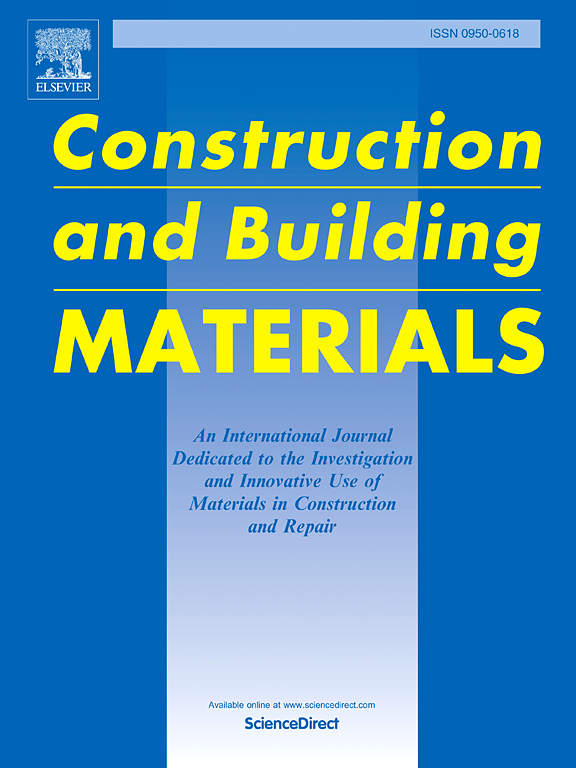Methods for improving the photocatalytic performance of cement-based materials
IF 7.4
1区 工程技术
Q1 CONSTRUCTION & BUILDING TECHNOLOGY
引用次数: 0
Abstract
The surface of cement-based materials is prone to contamination by organic substances. In this study, hollow glass microspheres (HGM) loaded with N-TiO2 were innovatively incorporated into the cement-based materials to enhance the degradation rate of organic pollutants. Initially, hollow glass microspheres loaded with N-TiO2 (HGM@N-TiO2) were prepared and their microstructure and photocatalytic performance were tested. Subsequently, the Monte Carlo model was utilized to simulate the transmission depth of visible light within cement-based materials. The distribution of the loaded catalyst was adjusted by controlling the slurry viscosity to match the light transmission depth. The results indicate that N-TiO2 prepared by the sol-gel method was uniformly loaded on the surface of HGM. When the mass fraction of the catalyst in the cement slurry was 5 % and the slurry viscosity did not exceed 0.2 Pa·s, the volume fraction of the loaded catalyst within the 0 mm ∼ 1 mm depth range was over 25 %. The degradation rate of the organic compound Rhodamine B increased from 48 % with direct addition of N-TiO2 to approximately 78 %. When the catalyst content exceeded 5 %, the volume fraction of the catalyst on the surface of the cement-based material increased, enhancing the photocatalytic effect. However, this also led to an increase in slurry viscosity, carbonation depth, and the number of harmful pores, resulting in a decrease in mechanical properties and the durability of photocatalytic activity. In order to improve the durability, the hydrophobic modifier sodium laurate was used to reduce the carbonation depth from 2.70 mm to 0.78 mm, and the long-term photocatalytic performance was significantly improved. This study effectively addresses the common encapsulation and shielding issues associated with conventional photocatalysts, thereby increasing light transmission depth within the cement-based matrix and enhancing photocatalytic efficiency.
求助全文
约1分钟内获得全文
求助全文
来源期刊

Construction and Building Materials
工程技术-材料科学:综合
CiteScore
13.80
自引率
21.60%
发文量
3632
审稿时长
82 days
期刊介绍:
Construction and Building Materials offers an international platform for sharing innovative and original research and development in the realm of construction and building materials, along with their practical applications in new projects and repair practices. The journal publishes a diverse array of pioneering research and application papers, detailing laboratory investigations and, to a limited extent, numerical analyses or reports on full-scale projects. Multi-part papers are discouraged.
Additionally, Construction and Building Materials features comprehensive case studies and insightful review articles that contribute to new insights in the field. Our focus is on papers related to construction materials, excluding those on structural engineering, geotechnics, and unbound highway layers. Covered materials and technologies encompass cement, concrete reinforcement, bricks and mortars, additives, corrosion technology, ceramics, timber, steel, polymers, glass fibers, recycled materials, bamboo, rammed earth, non-conventional building materials, bituminous materials, and applications in railway materials.
 求助内容:
求助内容: 应助结果提醒方式:
应助结果提醒方式:


